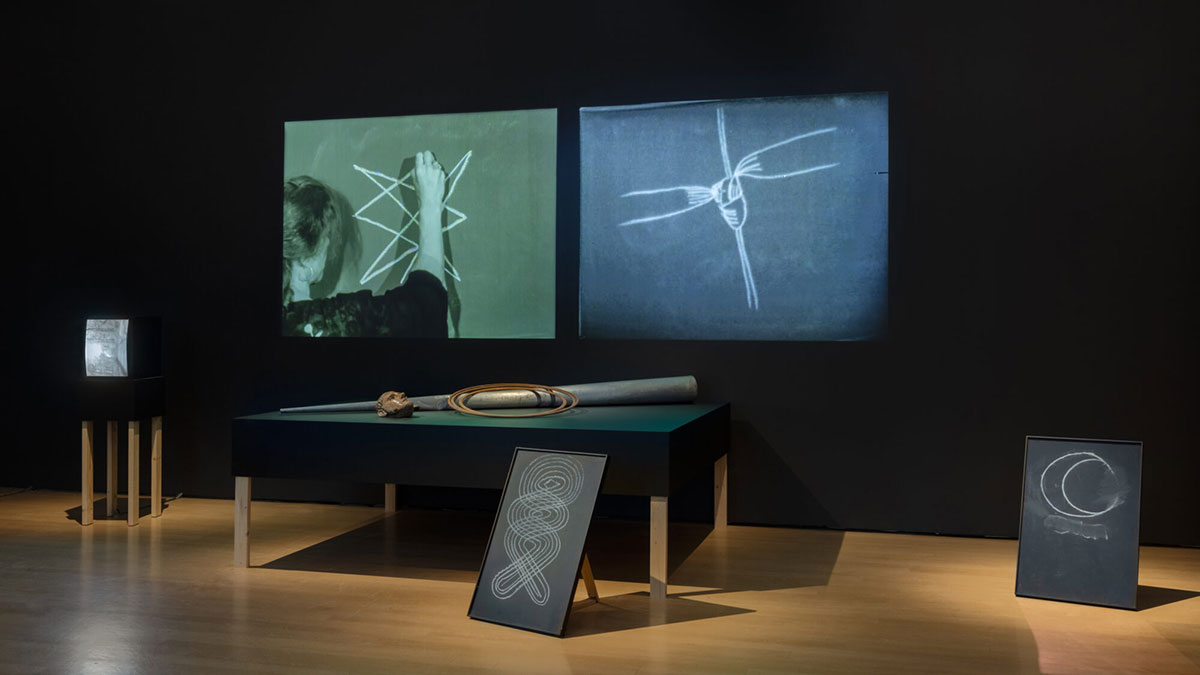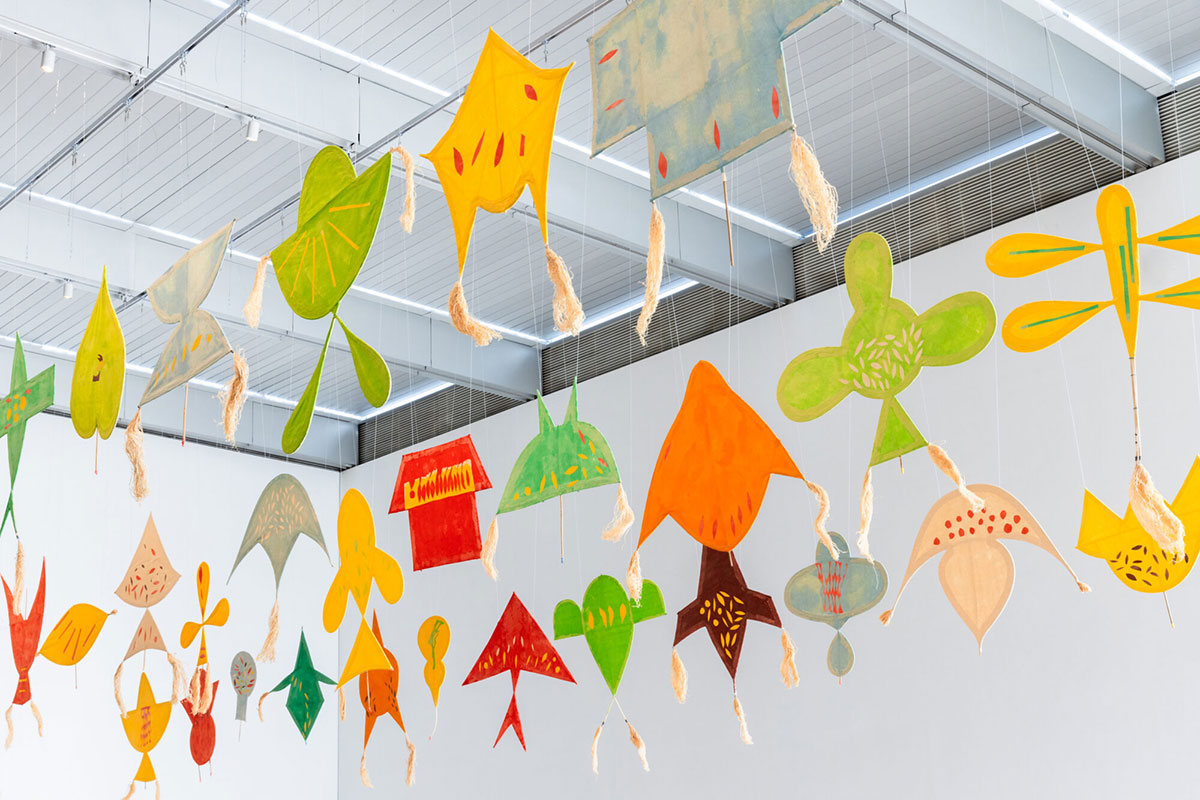PRESENTATION: Joan Jonas-Good Night Good Morning
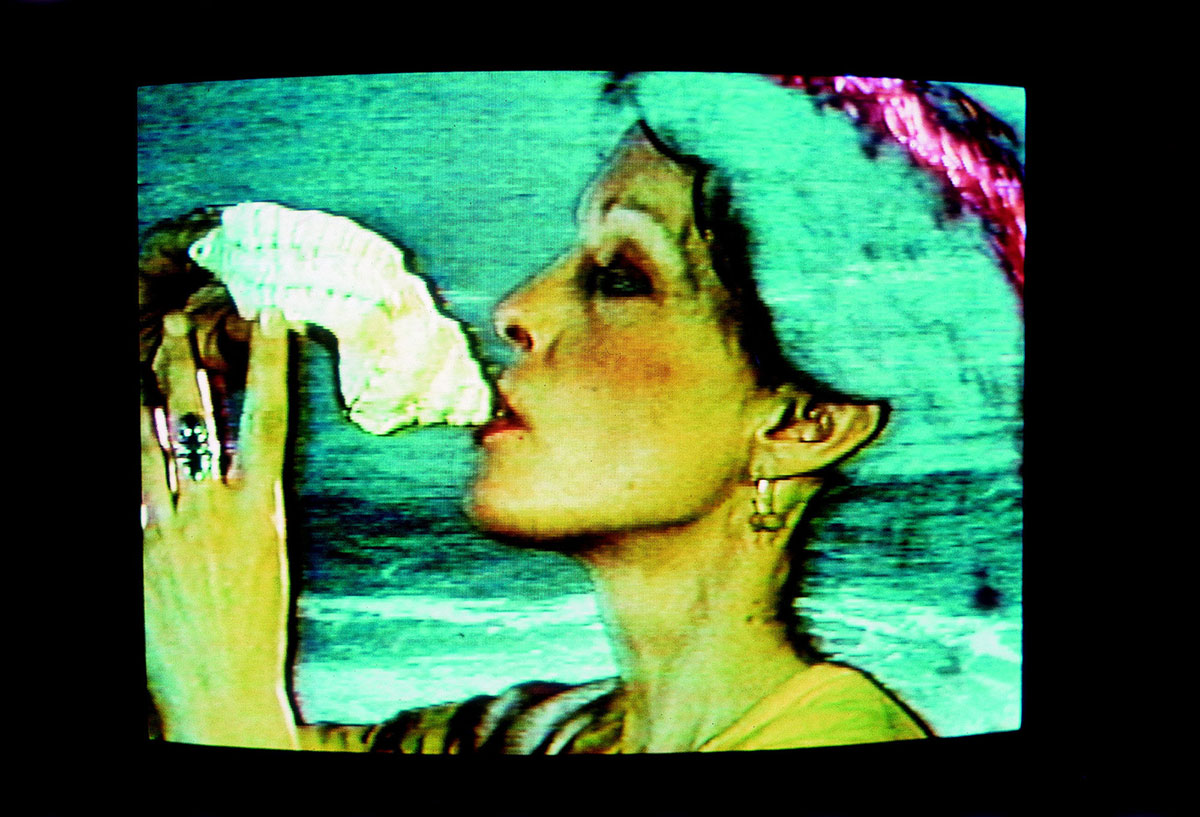 Joan Jonas works in video, installation, sculpture, and drawing, often collaborating with musicians and dancers to realize improvisational works that are equally at home in the museum gallery and on the theatrical stage. Drawing on mythic stories from various cultures, Jonas invests texts from the past with the politics of the present. By wearing masks in some works, and drawing while performing on stage in others, she disrupts the conventions of theatrical storytelling to emphasize potent symbols and critical self-awareness.
Joan Jonas works in video, installation, sculpture, and drawing, often collaborating with musicians and dancers to realize improvisational works that are equally at home in the museum gallery and on the theatrical stage. Drawing on mythic stories from various cultures, Jonas invests texts from the past with the politics of the present. By wearing masks in some works, and drawing while performing on stage in others, she disrupts the conventions of theatrical storytelling to emphasize potent symbols and critical self-awareness.
By Efi Michalarou
Photo: MoMA Archive
Joan Jonas began her career as a sculptor, and it was not until attending workshops with choreographers from Judson Dance Theater in the late 1960s that she would refocus her artistic practice on experimentation with performance and technology. Organized chronologically, the retrospective “Joan Jonas: Good Night Good Morning” highlights four major themes that are present throughout Jonas’s multidisciplinary body of work: performance, technology, literature, and ecology. The exhibition also foregrounds how Jonas uses her own works as archival material—with each project building on those that preceded it, often transforming and restaging them into other mediums. The exhibition opens with a 16mm film projection of “Wind” (1968), which introduces many of Jonas’s interests, such as performing for the camera, the impact of natural phenomena, and the use of mirrors as a method of manipulating and fragmenting space. These themes are tracked throughout the course of the exhibition, particularly in early performances from the 1960s and ’70s that were set in New York City’s downtown lofts, piers, empty lots, and public beaches and are highlighted in the first gallery. In the photo documentations of “Mirror Piece I” (1969) and “Mirror Piece II” (1970), performers carrying mirrors in choreographed sequences, reflecting the audience and incorporating them into the space of the action. Jonas deployed the mirror as a viewing device, prop, and tool for reflecting upon identity and self-perception. The exhibition also outlines the artist’s use of newly available technology at the beginning of the 1970s, like the Sony Portapak camera used in the artist’s first video-performance, “Organic Honey’s Visual Telepathy” (1972). In this work, Jonas considered the monitor as an ongoing mirror—her alter-ego Organic Honey’s performance for the camera harnessed technology’s ability to record and display content in real time. The retrospective offers a new version of the installation “Organic Honey’s Visual Telepathy/Organic Honey’s Vertical Roll” adapted to MoMA’s space, reinvigorating Jonas’s contemporary legacy in the fields of video, installation, performance, and feminist art. Cross-media installations throughout the retrospective provide insight into Jonas’s unique working method, including the artist’s multilayered translation process from one medium to another—from performance through video to installation. For example, “Mirage” (1976/1994/2005/2019) began in 1976 as a performance at New York’s Anthology Film Archives. There, Jonas used film, video, drawing, and props to evoke rituals. In 1994, the artist reimagined the work as an installation consisting of sculptural elements, chalkboard drawings, videos, and documentation of the original performance—which she then reconfigured at MoMA in 2005 and 2019, and has revisited again for this exhibition. Since the late 1960s, the artist has drawn inspiration from fables, ancient myths, folklore, and poetry, which form the groundwork for important works like “The Juniper Tree” (1976/1994), on view in the next gallery. A large-scale performance installation based on the Brothers Grimm’s written version of the eponymous story, this work’s audio recording of the artist retelling the fairytale demonstrates Jonas’s interest in oral traditions and narratives told by women about their roles in society. The following gallery also features “Volcano Saga” (1987), in which Jonas continues her interest in literature and reinterprets the “Laxdaela Saga”, a 13th-century Icelandic folktale. Initially realized as a performance, the video version on view in the exhibition was realized in 1989 and features the actors Tilda Swinton and Ron Vawter. The following gallery displays materials showing Jonas’s processes of working, collecting, and teaching. A selection of Jonas’s teaching notes and video collaborations with students are key examples of her crucial role as an educator. This collection of objects also spotlights the importance of performance props in Jonas’s works. Most of these objects were bought in an antique store in Cape Breton, Nova Scotia, Canada, where the artist spent yearly summers and whose natural scenery spurred her fascination with landscape and ecology, key themes in the exhibition and throughout the artist’s body of work. The exhibition also presents recent multimedia installations that address environmental themes of ecological crisis, including two works in MoMA’s collection. The first, “Reanimation” (2010/2012/2013), is one of Jonas’s many collaborations with the jazz musician Jason Moran. The other, “Moving Off the Land II” (2019), which is being shown for the first time in the United States, was realized in close collaboration with scientist David Gruber and pays tribute to the ocean and its creatures. The exhibition features two new works, including a new commission by the artist informed by David Gruber’s latest research on the consciousness of whales, titled “To Touch Sound” (2024). The exhibition concludes with “By a Thread in the Wind” (2024), a series of newly made kites that, according to the artist, can be used “to judge distance, to signal, to carry fire, to banish evil, for communication, to carry a child, to carry an adult, to bear a message”.
Photo: Joan Jonas, still from Double Lunar Dogs © 2017 Joan Jonas. Image courtesy Electronic Arts Intermix (EAI), New York. Video (color, sound)
Info: Curator: Ana Janevski, Assistant Curators: Lilia Rocio Taboada and Gee Wesley, MoMA (The Museum of Modern Art), 11 West 53 Street, Manhattan, New York, NY, USA, Duration: 17/3-6/7/2024, Days & Hours: Mon-Fri & Sun 10:30-17:30, Sat 10:30-19:00, www.moma.org/
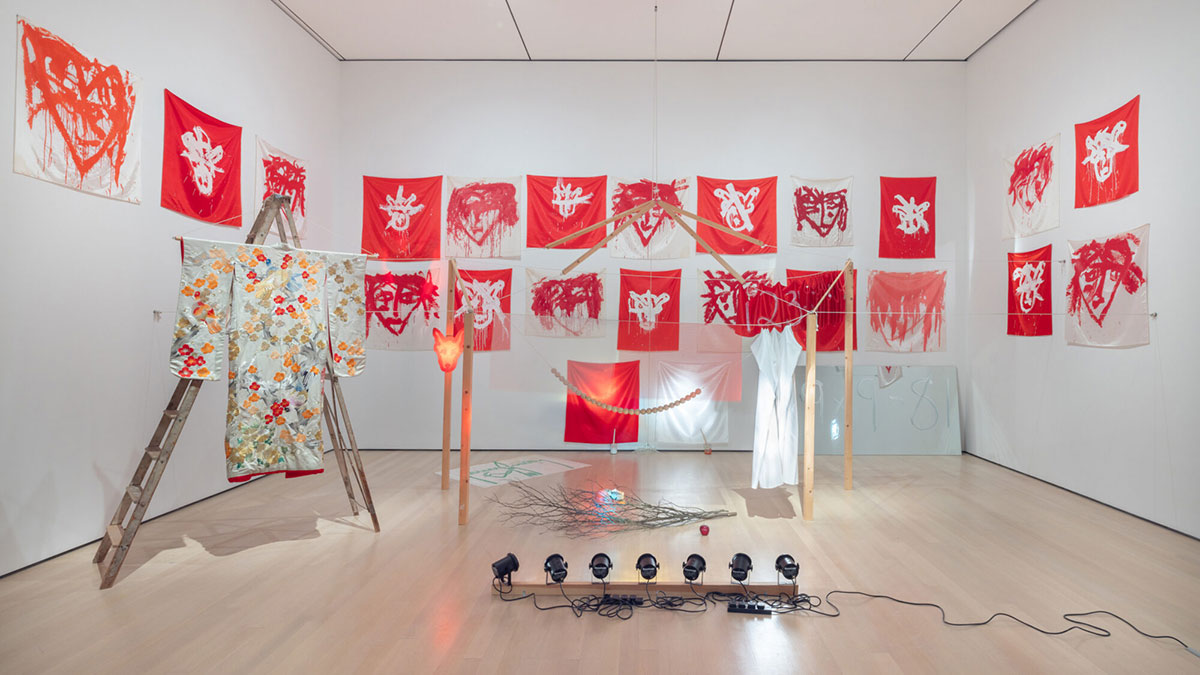
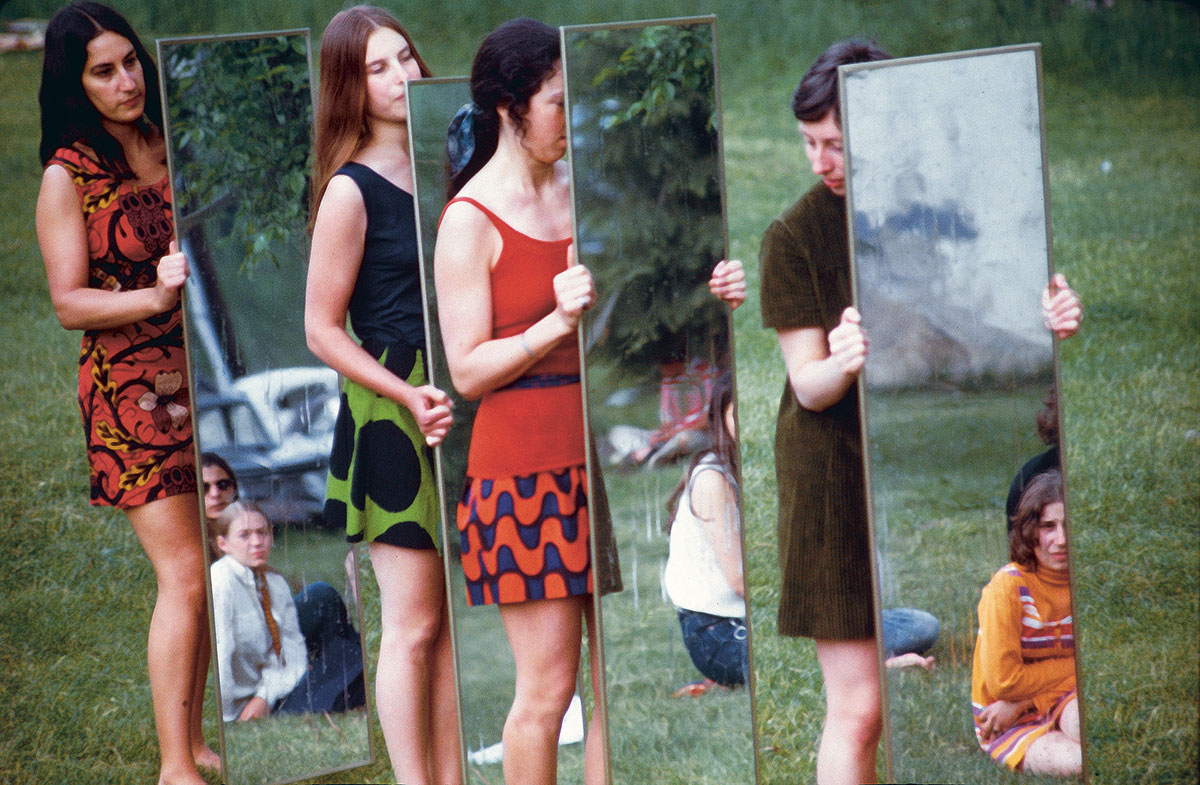
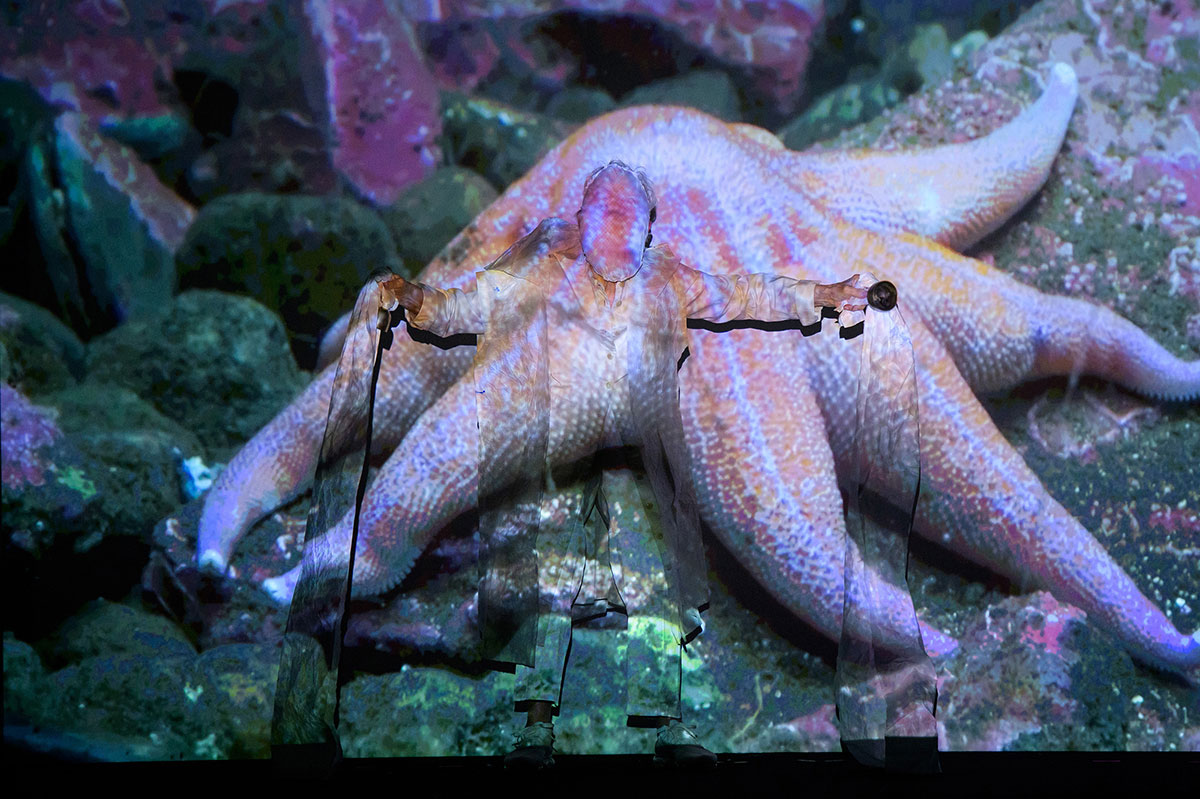
Joan Jonas. Moving Off the Land. 2016-2018. Presented by Danspace Project, New York, 2018. High-definition video (color, sound), 58:00 min. Photo by Ian Douglas/courtesy of Danspace Project. © Joan Jonas/Artists Rights Society (ARS), New York
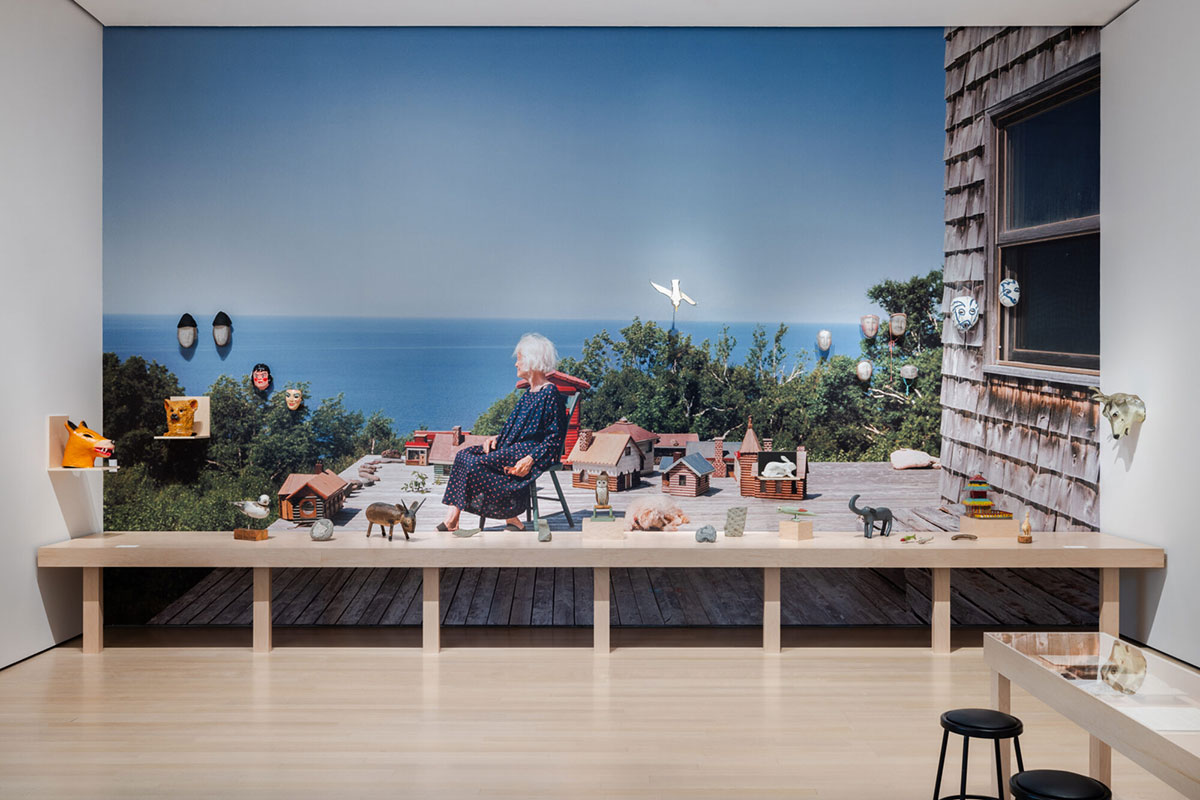
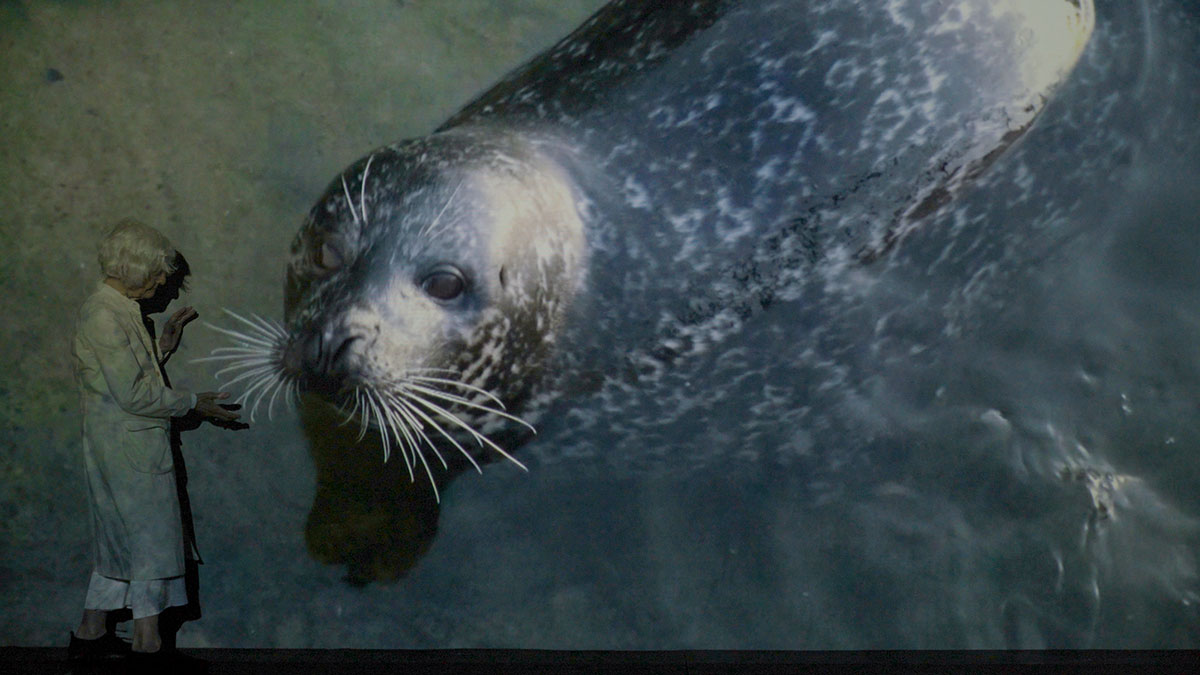
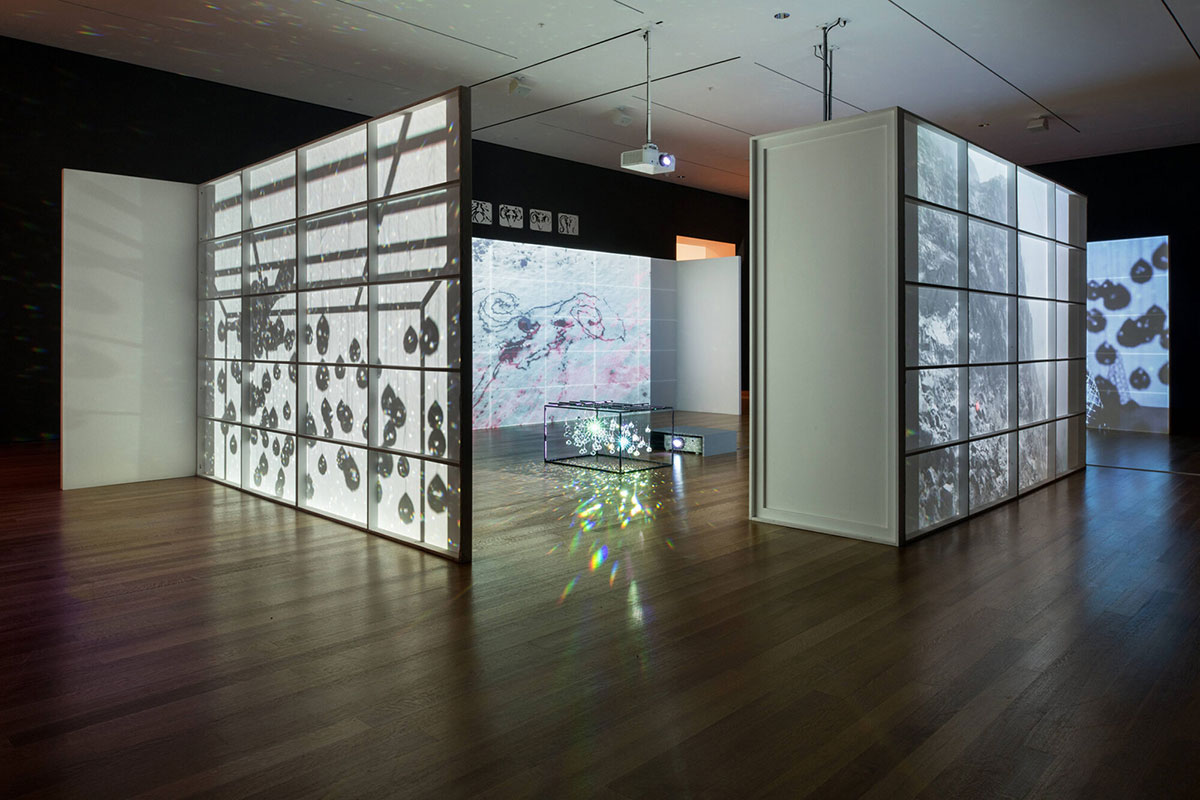
Joan Jonas, installation view of Reanimation. 2010/2012/2013. Four videos (color, sound and silent) on custom screens within a prefabricated house structure, two custom benches (made by Ed Gavagan), and crystal sculpture; two wooden theater boxes with video (color, sound and silent); fifteen ink drawings on paper; three oil stick drawings on paper, and two china marker wall drawings. Soundtrack and voice: Joan Jonas; Sami yoik singing: Ánde Somby; Piano and additional sound effects: Jason Moran. © Joan Jonas/Artists Rights Society (ARS), New York
